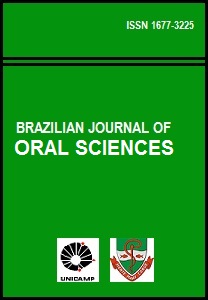Abstract
Aim: To determine the applicability of Carrea’s index in arches with normal tooth position and diastema and to evaluate its use in the maxillary arch. Methods: 51 pairs of plaster models made by dental students from the Federal University of Paraíba were analyzed. The arches and hemiarches were divided according to dental position and measured with a manual caliper and a digital caliper. With these measurements, maximum and minimum heights were estimated, comparing the values to the real height of the subjects. The data were then submitted to Pearson’s chi-square test and Fischer’s Exact test (CI = 95%). Results: In the mandibular hemiarches, there was statistically significant difference (p=0.017) between the types of dental position only in women, with crowded teeth obtaining the highest number of hits (95.2%), followed by diastema (50.0%). Only the left hemiarch was significantly different (p=0.049) and crowded teeth had the highest index of hits (82.6%), whereas diastema accounted for 40.0%. In the maxillary arch, the error percentage was 100% in the three types of dental position. Conclusion: Carrea’s index is applicable in normal and crowded teeth. However, it was not efficient in the maxillary arch and in hemiarches with diastema.The Brazilian Journal of Oral Sciences uses the Creative Commons license (CC), thus preserving the integrity of the articles in an open access environment.
Downloads
Download data is not yet available.

